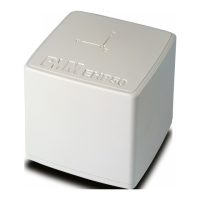2-4 Installation and use
2.11 Avoiding
measurement errors
To avoid disturbing the measurements in progress, the user or other
persons or mobile vehicles should stay at least 5 meters away from the
Analyzers. We also recommend that the probe be set up a long way from
metal objects or masses.
To perform correct measurements, the tripod TR-02A to hold EHP-
50G is mandatory. Using an unsuitable support could influence the
measurements that have been taken and, therefore, determine
incorrect results. We recommend always using the isolated extension
support supplied with EHP-50G for supporting the Analyzer.
We also recommend that the TR-02A optional tripod be used for
positioning EHP-50G at the height set out in the reference standards
for the measurement in progress and that this configuration is always
maintained so that the measurements taken can be repeated.
The intensity of the measured field mainly depends on its voltage and
the geometry of the system under examination as well as the distance
between the conductors and the measurement points. In the vicinity
of cables, the reading of the field value may be very high and vary
with the location of the probe.
From the definition of the potential difference between to points:
dr
r
r
E
V
−=
2
1
21
It is evident that, keeping the potential difference constant as the
distance between the two points under examination decreases, the
intensity of the field necessarily increases.
For example: the intensity of the electric field between two armatures
of a parallel-plate capacitor situated at a distance of 0.1 m and having
a potential difference of 100 V is equal to:
m
KV
m
V
E 1
1,0
100
==
It should be noted that a voltage of 100 V, in these conditions,
generates a field of 1000 V/m. It is, therefore, possible, in the vicinity
of 220 V conductors, that there may be a field, which is much higher
than 220 V/m.

